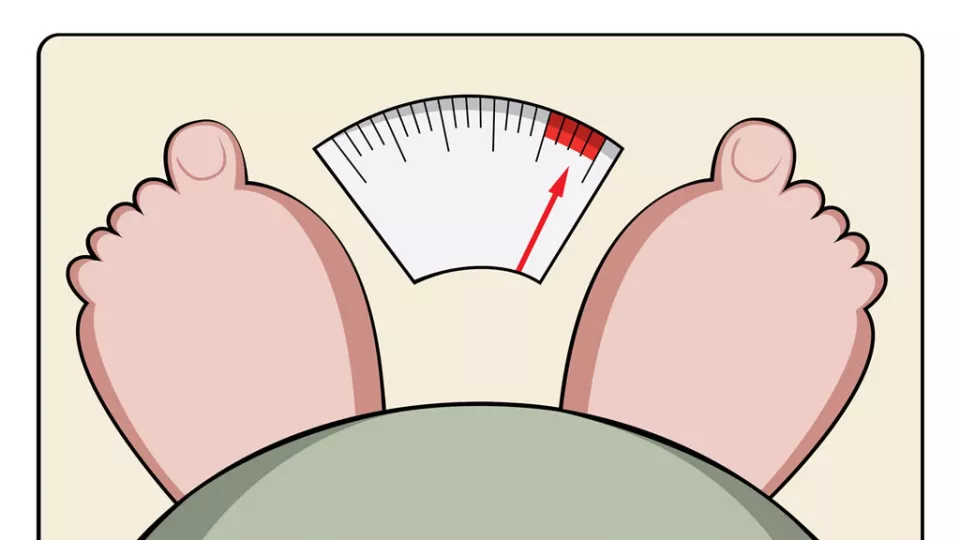Anorexia nervosa, most commonly referred to as just “anorexia,” is an eating disorder marked by a deficient body weight, a crippling fear of gaining weight, and a skewed understanding of weight. Anorexics prioritize maintaining a healthy weight and body image, often requiring drastic measures that severely disrupt their daily routines.
To maintain their weight loss or avoid gaining it back, anorexics typically strictly restrict their food intake. They might use laxatives, diet pills, diuretics, or enemas improperly, or they might vomit just after eating to reduce their caloric intake. They can also attempt to shed pounds by engaging in excessive exercise. The person’s anxiety about gaining weight persists, regardless of the amount of weight lost.
Food isn’t a factor in anorexia. It’s a hazardous and harmful method of attempting to deal with emotional issues. Being thin is typically associated with self-worth in anorexics.
Who Is at Risk for Anorexia?
If you are designated female at birth, you are more likely to experience eating disorders like anorexia than if you are given male at birth, while the rates of the latter group are on the rise. Compared to white people, people of color may be less likely to have questions about their symptoms. (You also have a roughly 50% lower chance of receiving a diagnosis or treatment.) You may be more likely to struggle with an eating disorder and make suicide attempts.
Performers, models, dancers, and athletes in weight-conscious sports like figure skating, boxing, wrestling, and gymnastics are more likely to suffer from eating disorders.
You might be a great achiever, excelling in your job, athletics, education, and other pursuits. You can exhibit obsessive, nervous, or sad symptoms, along with perfectionist traits. Anorexia can strike at any time, but it typically starts around adolescence.
How common is anorexia?
Eating disorders affect at least 9% of the worldwide population, and anorexia affects approximately 1% to 2% of the population. It affects 0.3% of adolescents.

Why does anorexia occur?
All eating disorders, including anorexia, are complicated diseases. Because of this, the precise origin of anorexia is unknown; nonetheless, research points to a potential mix of genetic predispositions, psychological characteristics, and environmental variables, particularly sociocultural ones.
Several factors could contribute to the development of anorexia, including:
Genetics: Studies indicate that between 50% and 80% of the risk factors for eating disorders are inherited. An eating problem is ten times more likely to develop in people who have first-degree relatives—parents or siblings—who also have one, suggesting a hereditary component. Modifications in brain chemistry could also play a role, specifically in the brain reward system and with neurotransmitters like dopamine and serotonin, which influence mood, impulse control, appetite, and mood.
Trauma: According to several specialists, people who strive to restrict their food intake as a coping mechanism for intense emotions and overpowering sentiments are the origin of eating disorders, including anorexia. For instance, physical or sexual abuse can play a role in the development of an eating disorder in certain individuals.
Environment and culture: People may feel unwarranted pressure to meet unattainable body standards in societies that idealize a specific body type, typically “thin” bodies. Media representations and popular culture frequently associate being thin with success, pleasure, popularity, and attractiveness. Anorexia may develop in someone as a result of this.
Peer pressure: This may be an extremely potent influence, especially for kids and teenagers. Anorexia can occur as a result of being subjected to body image or weight-related taunts, bullying, or ridicule.
Emotional well-being: An individual’s sense of self-worth and self-esteem can be undermined by impulsive conduct, perfectionism, and challenging relationships. They may become more susceptible to anorexia as a result.
It’s crucial to understand that anorexia, or eating disorders, can develop in a variety of ways. Inappropriate coping mechanisms that eventually turn into persistent eating habits are what many individuals refer to as “disordered eating.” Some people with anorexia do follow this path to disordered eating, but not all of them do.
Even though doctors don’t know why people get anorexia, they do know that some things can make someone more likely to have it. They can include:
How is anorexia treated?
Anorexia is a complex eating disorder that often requires early diagnosis and treatment. The goals of treatment include stabilizing weight loss, initiating nutrition rehabilitation to restore weight, eliminating binge eating and purging behaviors, treating psychological issues like low self-esteem and distorted thinking patterns, and developing long-term behavioral changes.
People with eating disorders often have additional mental health conditions, such as depression, anxiety disorders, borderline personality disorder, obsessive-compulsive disorder, and substance use disorders.
Treatment options vary depending on the individual’s needs and may involve residential care or hospitalization. A combination of strategies, including psychotherapy, medication, nutrition counseling, group and/or family therapy, and hospitalization, is most common.
Psychotherapy focuses on changing the thinking and behavior of anorexia patients, including acceptance and commitment therapy, cognitive behavioral therapy (CBT), cognitive remediation therapy, dialectical behavior therapy (DBT), family-based therapy, interpersonal psychotherapy, and psychodynamic psychotherapy.
Medications may be prescribed to manage anxiety and depression associated with anorexia, such as olanzapine (Zyprexa®) for weight gain and period regulation.
Nutrition counseling involves teaching a healthy approach to food and weight, helping restore normal eating patterns, emphasizing nutrition and a balanced diet, and restoring a healthy relationship with food and eating.
Group and/or family therapy is crucial for anorexia treatment success, as it helps individuals understand the eating disorder and recognize its signs and symptoms.
Hospitalization may be necessary for severe weight loss resulting in malnutrition and other serious mental or physical health complications.
Conclusion
Anorexia nervosa is a complicated eating disorder with many underlying causes, such as environmental variables, psychological issues, social pressures, and genetic predispositions. It frequently appears as a coping strategy for underlying emotional problems such as trauma, poor self-worth, and perfectionism. Even though each person’s exact cause of anorexia may be different, it’s important to understand the risk factors and warning indicators linked to the illness. To address anorexia and encourage recovery, early intervention, and thorough therapy are crucial. Depending on the specific needs of each patient, treatment strategies may include family therapy, medicine, nutrition counseling, and psychotherapy. Through the management of anorexia’s psychological and physical components, people can attain stability, reestablish nutritious eating habits, and create enduring behavioral modifications.
References
https://www.mayoclinic.org/diseases-conditions/anorexia-nervosa/symptoms-causes/syc-20353591
https://www.webmd.com/mental-health/eating-disorders/anorexia-nervosa/mental-health-anorexia-nervosa
https://my.clevelandclinic.org/health/diseases/9794-anorexia-nervosa










